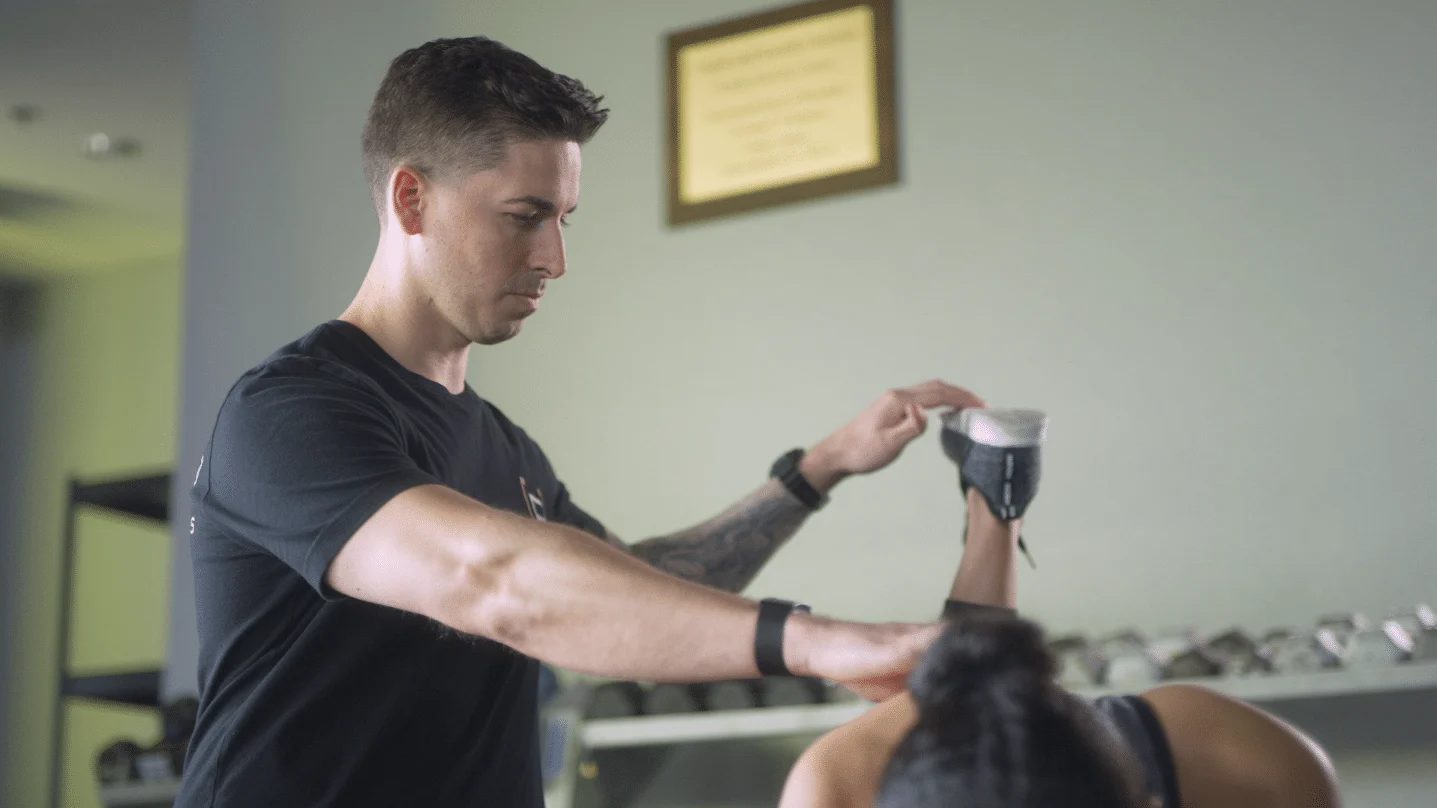Topics
- Article
- Training & Exercise
Prehab Your Performance to Reduce the Risk of Injury

No matter what type of athlete you are, staying healthy and able to perform is critical. As a treating physical therapist in an orthopedic and sports setting, I help patients rehab from overuse injuries that could often have easily been prevented. To understand how rehab (and prehab) works, you first have to understand how an injury occurs.
Why do injuries happen?
Two components of an injury are tissue capacity and activity overload. When the demands of an activity are greater than the tissue capacity the tissue will fail, and as a result an injury may occur. An easier way to imagine this is if you went to lift a 100-pound weight with a tool that had a lifting capacity of only 80 pounds, the tool is more than likely going to fail at completing the lift.
It’s a pretty simple concept, right? However, the issue is we don’t have easy-to-read capacity limits for our bones, ligaments, muscles and tendons that we can double check prior to an athletic endeavor or physical performance.
So with rehab patients, a lot of what I do is prescribe and monitor strain. Using the progressive-overload principle, the goal is to get the injured tissue’s capacity back to at least baseline, but ideally greater than 100% considering the tissue failed in the first place. If this individual wants to get back to running, but that’s what got them hurt in the first place, I have to investigate why.
What caused the injury? Was it an instantaneous moment of activity overload? Maybe chronic work overload? Or was the tissue capacity inferior to begin with? Could this individual not perform well enough to handle the strain?
This leads me to [p]rehab, something that I am educating patients on on a daily basis.
What is Prehab?
Prehabilitation (prehab for short) is a proactive approach to optimizing your movement and performance while trying to mitigate the risk of injury.
Prehab originally started as a means to optimize surgical results with people literally doing rehab prior to surgery. Hospitals and doctors did their research and figured out that patients recovered faster when they went into surgery in better physical shape–from range of motion, to muscle strength, you name it. As we further understand the value of preventative medicine, prehab has now entered the world of physical fitness and athletic training as well.

Prehab varies for everyone. Of course you can’t go wrong with being physically fit, strong, and aerobically in shape, but prehab for a soccer player is going to look different than prehab for a firefighter. It all comes down to understanding the physical demands of your life, hobbies, sports, and other physical activities that put strain on your body. What are the common injuries associated with those physical tasks? Prehab consists of programming specific exercises to make sure your bones, ligaments, muscles, and tendons are capable of meeting these physical demands.
The value of data
So how can WHOOPers (Did I just make this up?!) use their data to their advantage when it comes to prehab? I have been on WHOOP for quite some time now, and simply put, life is no longer a guessing game. As a physical therapist, I’m very aware that there is substantial value in data, especially when it is objective.
For example, instead of just saying that was “a hard run” or “a tough leg workout,” I can actually see how much physical strain those activities put on my body (on a 0-21 scale). Additionally, I wake up knowing how ready my body is to perform at a physiologic level, and I can reflect on my sleep habits when I’m home versus when I’m on the road traveling and teaching. I can also now validate to my wife how straining simple things like golf can be on the body (I recently played a round that was a strain of 16+).
Now this is not to say there is no value in subjective data, but it can only go so far when viewed alone. Think back to the runner in rehab scenario–what if they knew exactly when to push it or not? Maybe they were following a training schedule and had a big run planned that day despite a recovery in the red? If the injury was due to being over-strained or not recovered, couldn’t it have been avoided?
Prehab with WHOOP
With WHOOP, you can prehab your life. Here are a few instances of how that has worked for me.
Prior to using WHOOP, I had no idea hiking was so straining on my body. I’ve learned that I need to up the intensity of my training sessions in order to increase my tissue capacity to meet the demands of hiking.

When my daily WHOOP recovery is red or yellow, I fatigue much sooner during my workouts compared to when it is in the green. I know that injuries can occur when the tissue capacity cannot meet the physical demands, and that tissues are more vulnerable when fatigued or not properly warmed up. This has inspired me to adjust my running mileage, my 1RM% intensities, and my work-to-rest ratios during training sessions when my recovery isn’t great.
When I’m using the Strain Target and my workout goal is a high strain, I usually spend extra time with my warm-up to maximize my performance and ensure my body is prepared for that additional load.
Similarly, the WHOOP Sleep Planner also helps me with prehab. Sleep is one of the biggest modifiable risk factors when it comes to injury. I no longer have to guess how much sleep I need to be at my best. WHOOP tells me my optimal bed and wake times depending on if I just want to get by, perform, or peak the next day. I also now understand the sleep debt I accumulate after really hard training sessions, high-strain days, or even quick travel trips to teach.
All of this translates into the conversations I have with my rehab patients and my prehab education.
Understanding your internal workload (perceived exertion, how tired you are, if you feel stressed out or sick) and your external workload (strain) can really help guide your prehab. Some injuries are inevitable, and accidents happen. However, WHOOP members are one step ahead with 24/7 biometric data to help guide them. By better understanding the physical demands of your life and how they can increase the risk of specific injuries, you can prehab appropriately to mitigate that risk.
Visit theprehabguys.com to learn more.